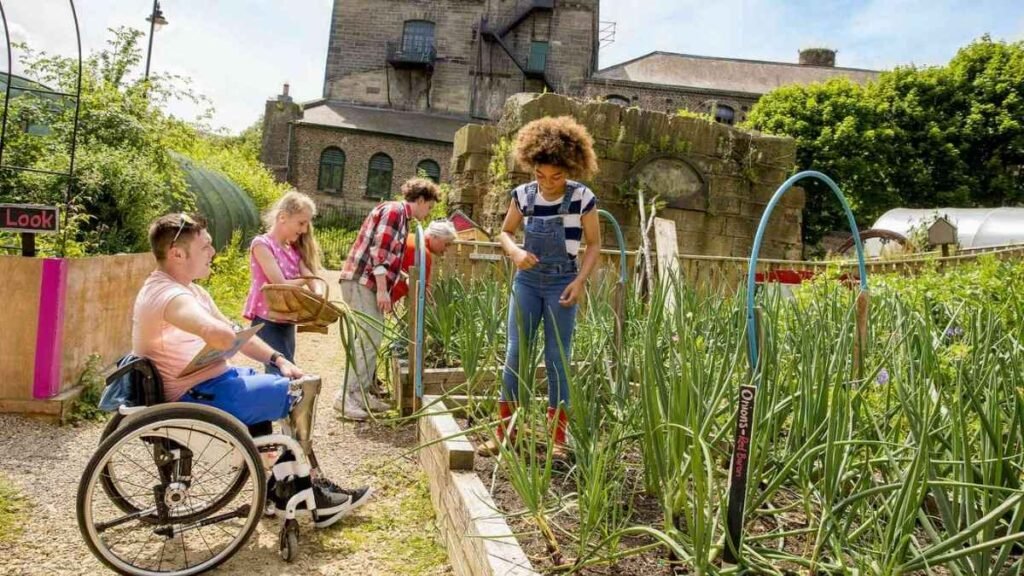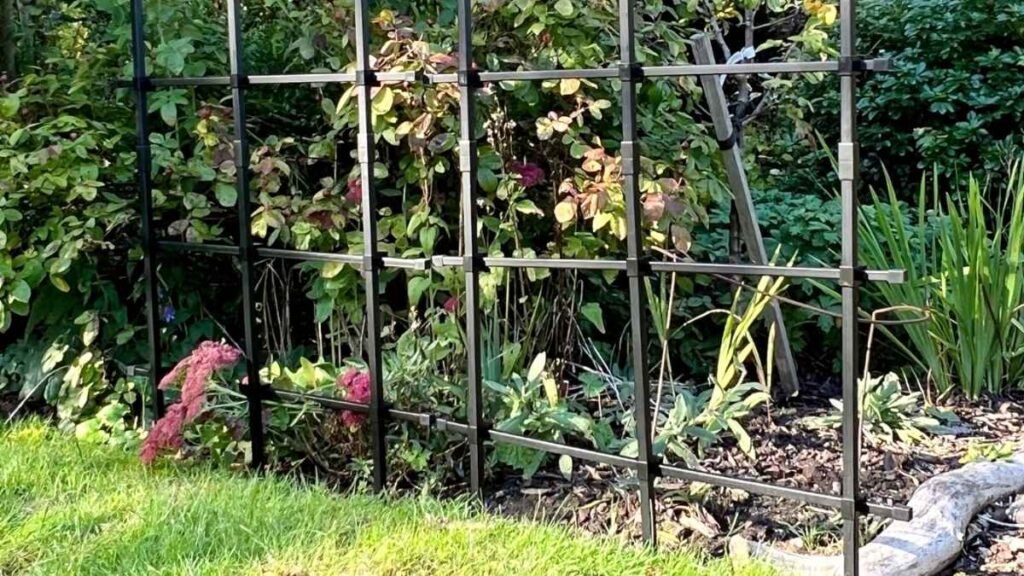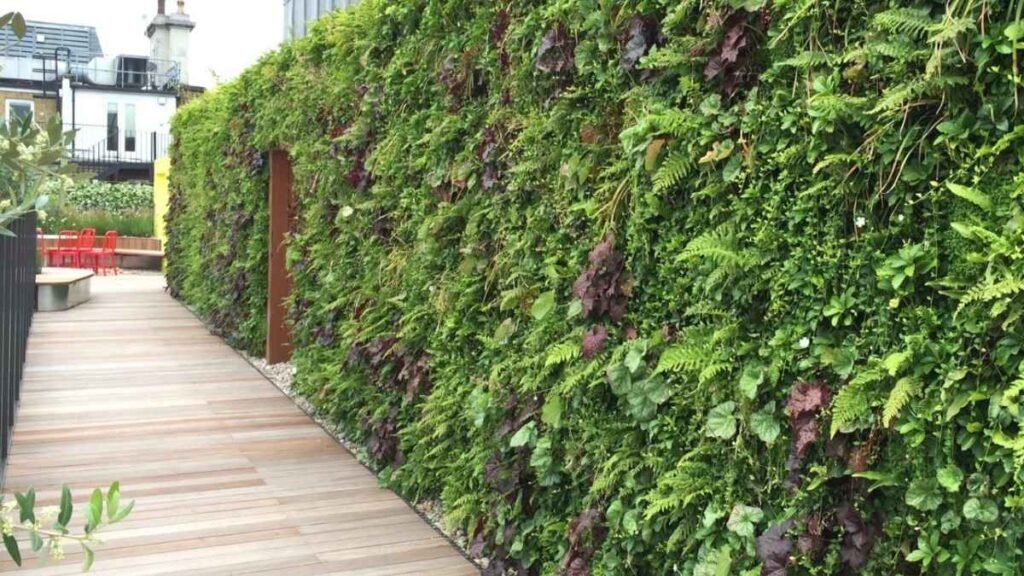In today’s fast-paced world, where space is often at a premium, finding ways to grow your own plants in limited areas can be a game-changer. Whether you live in a small apartment, have a tiny backyard, or just want to make the most of your space, vertical gardening is the solution you need. By growing plants upwards rather than outwards, vertical gardening allows you to maximize your available space, making it possible to cultivate a wide variety of plants even in the most compact of spaces.
In this post, we’ll explore why you should try vertical gardening and offer you some top tricks for making the most of your space. If you’re a gardening enthusiast or a beginner looking to optimize your gardening efforts, vertical gardening can help you create a thriving, lush garden without sacrificing valuable space.
The Benefits of Vertical Gardening
Vertical gardening is a technique that involves growing plants upwards using supports such as trellises, towers, and walls. This method offers several key benefits that make it particularly appealing for people with limited space. Let’s look at why vertical gardening is worth considering:

Space Efficiency
The most obvious benefit of vertical gardening is space efficiency. By growing plants vertically, you can use walls, fences, and other vertical structures as growing surfaces, freeing up horizontal space for other uses. Whether you’re growing flowers, vegetables, or herbs, you can fit more plants into smaller areas. This is particularly advantageous for people with small yards, balconies, or rooftops where traditional gardening methods might not be feasible.
Better Air Circulation and Sunlight Exposure
Vertical gardens often offer better air circulation and increased exposure to sunlight. Plants that grow upwards are less likely to be shaded by surrounding objects, and they can benefit from the sun’s rays throughout the day.

The increased airflow around the plants helps reduce the risk of fungal diseases and promotes healthy growth. This makes vertical gardening ideal for plants that require full sun and good ventilation, such as tomatoes, cucumbers, and climbing roses.
Improved Aesthetic Appeal
A vertical garden can add a unique and striking aesthetic element to your home or garden. Whether you’re using a simple trellis to support climbing plants or creating a more elaborate living wall, a vertical garden can transform an otherwise ordinary space into something beautiful. It can become a feature piece of your home, providing greenery and natural beauty without taking up much room.
Accessibility
Vertical gardens are also easier to maintain, especially for individuals with mobility issues or those who find it difficult to bend down and tend to low-lying plants.

With vertical gardening, plants are elevated, reducing the need to crouch or kneel when watering, harvesting, or trimming. This makes vertical gardening an ideal solution for people who want to enjoy the benefits of gardening without straining their bodies.
Top Tricks for Creating a Vertical Garden
Now that we’ve established why vertical gardening is so beneficial, let’s dive into some top tricks that can help you maximize space and achieve success with this gardening technique.
Use Trellises for Climbing Plants
One of the simplest ways to start vertical gardening is by using a trellis. Trellises are structures made of wood, metal, or plastic that provide support for climbing plants. They come in a wide range of sizes and shapes, from simple, single-panel designs to intricate, multi-panel options.
By growing plants like peas, beans, cucumbers, and tomatoes on a trellis, you can save ground space while encouraging upward growth.

Choose a sturdy, tall trellis to ensure that your climbing plants have enough room to spread and grow. Be sure to anchor the trellis firmly in the ground, especially if you live in a windy area, to prevent it from toppling over. You can also place trellises along fences or walls for an added layer of vertical gardening.
Create a Living Wall
For an even more advanced vertical gardening option, consider creating a living wall. A living wall is essentially a vertical garden that grows plants in pockets or containers attached to a structure or wall. This technique allows you to grow a variety of plants in a small space, including herbs, flowers, and even small vegetables.

To build a living wall, start by selecting a wall or fence in a location that gets sufficient sunlight. You can either purchase a pre-made vertical garden system or create your own by using wall-mounted planters, shoe organizers, or repurposed pallets. Fill the containers with soil, then plant your chosen plants. Make sure to provide adequate drainage to prevent water from pooling in the containers, which could damage the roots.
Living walls are not only functional but also visually striking, transforming a blank wall into a lush, green space. They’re especially useful for growing herbs in small kitchens or adding a pop of greenery to an urban setting.
Use Vertical Planters
Vertical planters are a convenient and space-saving option for growing a variety of plants. These planters are designed to stack or hang, allowing you to grow multiple layers of plants in a small footprint. They can be placed against a wall or fence and come in different designs, such as cascading towers or tiered structures.
A popular option is the vertical garden planter, which consists of several rows of stacked pots that are connected to each other. You can grow flowers, herbs, or even small vegetables in these planters. Make sure to choose planters with good drainage to prevent water from accumulating at the bottom and suffocating the roots.
Another option is to use hanging baskets or vertical garden pockets made from fabric or plastic. These can be mounted on fences, balcony railings, or even the sides of your house. You can plant trailing plants like strawberries, ferns, or ivy in these baskets, allowing them to grow downwards while saving horizontal space.
Maximize Vertical Space with Wall-Mounted Shelves
Wall-mounted shelves aren’t just for storing books or decor; they can also be used to hold potted plants and create a multi-tiered garden. Install a series of shelves along a wall and place potted plants on them to create a vertical garden display. This method works well for smaller plants like succulents, herbs, and flowers.
To keep your plants healthy, choose shelves that provide good drainage and can support the weight of your pots. You can also mix and match different types of plants on each shelf to create a visually appealing arrangement.
Incorporate Vertical Garden Systems for Edible Plants
If you’re interested in growing your own food but have limited space, consider using vertical garden systems designed specifically for edible plants. Vertical hydroponic systems, for example, allow you to grow vegetables like lettuce, kale, and herbs in a compact, space-saving structure without soil. These systems use water and nutrients to nourish plants, which makes them ideal for small spaces like apartments or balconies.
There are also vertical garden towers available that are designed for growing small edible plants. These towers allow you to plant multiple crops in a vertical stack, which can be watered from the top, with water cascading down to nourish the plants below. This method can help you grow a wide variety of vegetables and herbs in a very small area, making it perfect for urban gardeners.
Conclusion
Vertical gardening is a fantastic way to make the most of your available space, whether you have a tiny apartment, a small balcony, or a compact backyard. By using techniques like trellises, living walls, vertical planters, and wall-mounted shelves, you can create a lush and productive garden without taking up precious ground space. Not only does vertical gardening offer practical benefits like space efficiency and better air circulation, but it also adds aesthetic value and can help you grow a variety of plants, from flowers to vegetables, all in a confined area.
So, if you’re looking for a way to expand your gardening potential, give vertical gardening a try. With the right tools and techniques, you’ll be able to grow a flourishing garden while making the most of every inch of space available. Happy gardening!

